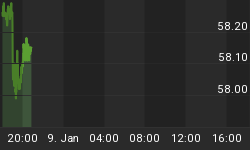Everything I've been warning about regarding the fallout from global central bankers' love affair with inflation is coming to fruition. Consumers are once again dealing with the fact that the cost of filling up their gas tank is eating a significant portion of their disposable income. The price of a barrel of oil is now soaring above $100 a barrel; just as it always has done when the Fed has gone on one of their counterfeiting sprees. And it's not just dollars that have been eroding in value because the price of oil in Euros is now at a record high. The sad truth is that with each iteration of QE, either in the U.S. or around the globe, it has sent oil prices skyrocketing, inflation rising and the economy into the tank.
But our nation's Treasury Secretary continues to display how very little he understands about markets and the economy. Timothy Geithner said last week that there is "no quick fix" to higher oil prices and that there's no easy solution for spiraling energy prices. What he does recommend is a long-term approach, "...to encourage Americans to be more efficient in how they use energy." My guess is what Mr. Geithner means by "encouraging Americans to be more efficient" is to make sure our economic growth is anemic.
In contrast to what Geithner believes, there are two things he, the Fed and the Obama administration could do today to bring oil prices down below $75 per barrel in less than 30 days. First, is to raise the Fed Funds rate to 1% and repeal Bernanke's pledge to keep interest rates at zero until the end of 2014. The second is for the president to proclaim that the U.S. does not support, in any way, a preemptive military attack on Iran. These two simple measures would dramatically strengthen the dollar, backing out at least $25 from the crumbling currency premium; and removing the $15 war premium built into the price of oil.
But seeing as neither of those things are likely to happen, we can look to recent history for what we can expect from soaring oil prices. In the summer of 2008, oil prices hit an all-time record high of $147 per barrel and gas prices hit a record $4.16 per gallon. This helped send the global economy into the Great Recession. Then in Q1 of 2011, QEII sent oil prices back to $114 per barrel and gas back above $4 a gallon. Predictably, U.S. GDP once again plummeted, falling from 2.3% in Q4 2010, to 0.4% in the following quarter. Today, oil prices are back to $110 per barrel and gas prices are surging back to $4 per gallon. Expect a slowdown in the economy similar to what occurred every other time gas prices hovered around the $4 level. We received a taste of that slowdown today with the release of the Durable Goods report. Orders for U.S. durable goods fell in January by the most in three years and capital goods expenditures, less aircraft and defense fell 4.5%.
The main reason why oil prices are rising is the same reason why food and import prices are soaring as well. Paper currencies across the world are losing their purchasing power against real assets that cannot be increased by fiat. Of course, the Pollyannas on Wall Street will tell you that oil is rising because of a rebounding economy. However, the facts are that gasoline demand is down 7% YOY, while oil inventories are at a six month high. If the global economy was indeed recovering why is the demand for gas at the pump falling? In reality, the global economy is very weak and the U.S. is very far removed from a sustainable recovery.
Japanese GDP dropped 2.3% in Q4 and the European Union is in recession, with last quarter's GDP falling 0.3%. And Greece has entered into a depression with GDP down 7% last quarter and falling sharply. Emerging market economies will be hard pressed to keep up their ebullient growth rates when the developed world's demand for foreign made goods is collapsing.
Meanwhile, the U.S. continues to run trillion dollar annual deficits and the unemployment rate is 8.3%. Inflation is destroying the nation's desire to save and invest, as the economy is suffering through a protracted period of stagflation. But perhaps the worst situation of all is that the Fed's free-money policy has set the economy up for the biggest interest rate shock in history. It's really not much of a mystery why investors have fled to gold and oil as an alternative to owning paper, which can only offer a negative return after inflation.















